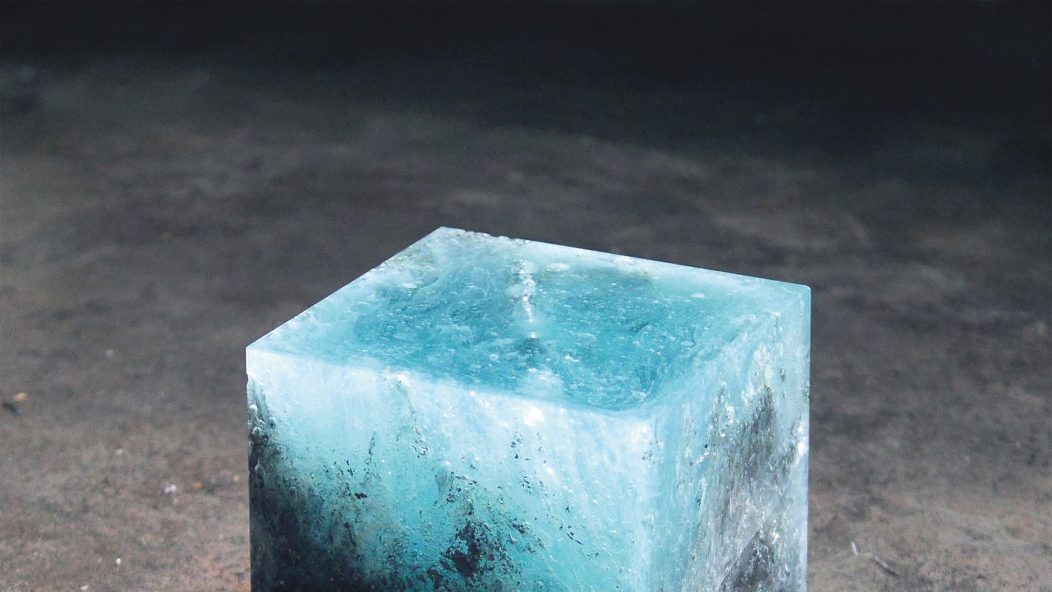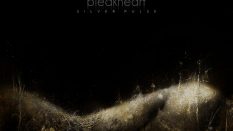
Locrian's Dark Soundscapes Creep Toward a "New Catastrophism" (Review)
One of part or wholly instrumental music‘s many compelling facets is that it’s all story, no plot. Shorn of human linguistic interference, music prompts the imagination first of all, suggesting places and plotlines that the listener can choose to invest in and develop, or simply sit back and indulge an interlude from the ceaseless chatter of the world.
Locrian get this, and have used the art of suggestion to inject space and oxygen throughout their own work and various collaborations starting with 2009’s Drenched Lands. They tend not to stay at one point on the map for too long, and have developed as performers of black metal, post-rock, electronics, and ambience, deployed to varying degrees and in unpredictable combinations with each release, meaning their albums can feel quite distinct from one another, even while retaining the same base ingredients.
…
…
Do not take this to mean however that Locrian course correct their interpretation of the world with each release, as in this regard they are remarkably consistent; painting scenes of pure paranoia against a backdrop of dystopian smog and squalor. Previous record Infinite Dissolution unusually contained the merest shimmer of hope: the scant vocal harmonies were that little bit clearer, the electronics marginally brighter, the drum tracks more driving. Following on from that release and their seven subsequent years of inactivity, which Locrian has dragged itself out of the tube lit, dust strewn back alleys, and what does it want to say? As a pitch black study in minimalism, it appears that with New Catastrophism the band is trying to tell us that things have never been worse.
For an earlier Locrian incarnation this may have meant doubling down on fuzzed out aggression, but on New Catastrophism they instead weave a sparse, bleak tale using heavy drone and dark ambient, punctuated at key junctions with rattling noise and pained, skyward howling.
Opener “Mortichnia,” the album’s longest piece and named fittingly after the last walk or death march of a living creature, establishes a tone for what’s to come as listeners step out into the barren sands Locrian have led them to. Speaking to life as a human in 2022, or as a tetrapod emerging from the ocean at the dawn of life on land; the universal finality of death is invoked by the band’s distant sirens and pulsating, corrosive synth work. Like all well made drone, the song weighs on the expectation of the listener, offering sonic clues and feints as to the direction in which it’s headed. In the particular case of Locrian we might expect the song to burst forth and conclude noisily or violently, but they stick to the bit, they understand that the death march ends in the gradual exhaustion of life’s final energy, so fittingly the song first writhes, then falters, then whimpers, before ceasing entirely.
The album goes on to layer additional musical elements sparingly. In a quiet space all noise is amplified and Locrian are aware of this, reluctant to incorporate arrangements that would veer too far into post rock or black metal territory thereby derailing the mise-en-scène of the work as a whole, and so we get the pounding drums and distant wails of “The Glare Is Everywhere And Nowhere Our Shadow”, and the acoustic lead of “Cenotaph To The Final Glacier”, each component given time and space to narrate its part of the story which, following true from that initial fatal encounter, moves on through eras and locations devoid of human life; with song titles referencing voids, maps, cenotaphs and glaciers.
These scenes, stark and still, extend to the album’s artwork, created by Trevor Paglen (also featuring design work by Chimere Noire.) The focus of Paglen’s career has been to peel back the mystique covering governance and political operations, and having previously produced work that focuses on rendition programmes, state surveillance and drone warfare he feels an especially suitable pairing for this band at this time. The cover itself depicts a block of cut ice set against an artificially flat concrete surface, a natural material completely out of context. As with the music itself we are left to draw our own conclusions as to the past and potential future of the object, for now the present is simply revealed to us in all its unnerving clarity.
For all of the darkness Locrian have poured into this album, it should be noted that the final of its four songs “Cenotaph To The Final Glacier” contains both its most human sounds and its most frenetic synthesiser work courtesy of Terence Hannum, and as such of all the music presented here it feels the most forgiving, in opposition to the ecological catastrophe implied by its title. Seven year hiatuses don’t happen for no reason, and there is a sense Locrian has awoken to deliver a message they believe is important. Received in that context, New Catastrophism is a deeply difficult listen: if we’re accustomed to using drone and ambient as an escape from the world, then Locrian are asking us to engage with music of the same category that instead deeply immerses us in it. Do the scenes Locrian have hewn here in ice and stone feel like places you’d want to live in? You already do.
…
New Catastrophism releases today via Profound Lore.










